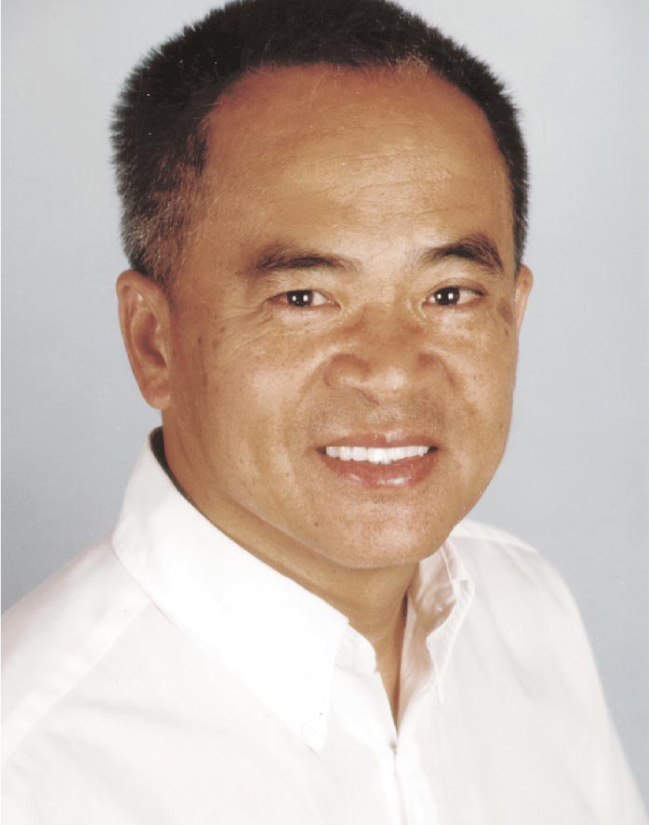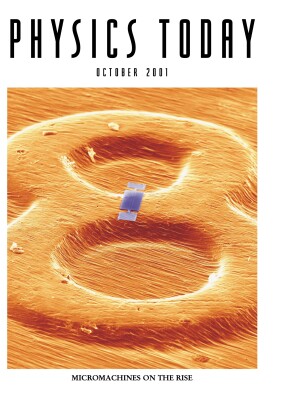Andrew Ching Tam
DOI: 10.1063/1.1420682
Andrew Ching Tam, an IBM research scientist who was a pioneer and internationally respected expert in the field of laser-induced photoacoustic and photothermal phenomena, died peacefully at a hospital in San Jose, California, on 23 February 2001 after a massive stroke.
Andrew was born on 13 October 1944 in Fushan, which is in the province of Canton, China. His potential was recognized early in his career. He entered the University of Hong Kong in 1964 as a Hong Kong Government Scholar. He received his BS in physics and mathematics there in 1967, a BS with a specialization in physics in 1968, and his MPhil in physics in 1970.
In 1970, Andrew enrolled in graduate school at Columbia University. After receiving his PhD in 1975 for his work in atomic, molecular, and laser physics, he was appointed an assistant professor of physics. His impressive scientific creativity became apparent at Columbia. Two of his important discoveries are the first magnetic resonance imaging experiment in laser-polarized sodium vapor, and “laser snow,” clouds of alkali-hydride crystals formed when resonant light is absorbed by alkali-metal vapors in hydrogen gas.
In 1978, Andrew joined Bell Laboratories in Murray Hill, New Jersey, as a member of the technical staff. There, he pioneered the detection of laser-induced acoustic transients with ultrasound transducers and made numerous contributions to the emerging field of photoacoustic or optoacoustic spectroscopy. Using these techniques, he demonstrated the capability of ultrasmall optical absorption measurements in solid, liquid, and amorphous media in the presence of large scattering losses. His energy and skill at attacking new problems successfully were legendary at Bell Labs.
After joining IBM’s San Jose Research Laboratory (now the IBM Almaden Research Center) in 1979, Andrew expanded the scope of his work to include transient thermal processes. He constantly pushed the detection limits of these techniques to higher time resolution and greater sensitivity to explore the spectral, thermal, and acoustical properties of materials of scientific and technical interest. With ever higher laser-induced temperature transients, he studied the thermal properties of these materials during laser-induced melting, vaporization, and ablation. More than 150 publications in the scientific literature are a permanent record of his work in photothermal phenomena.
In parallel, Andrew pursued applications of these phenomena in the computer industry. This aspect of his work resulted in 38 US patents, which focused on texturing the head-parking zone of magnetic hard disks. In 1995, he developed a technique to roughen the supersmooth disks in a well-controlled fashion to prevent a Van der Waals interaction from irreversibly joining the magnetic read/write element with the recording media when a disk drive is powered down. Andrew not only studied the underlying physics in great detail, but also developed the manufacturing tools and the diagnostic procedures that made his texturing process a success throughout the industry. In 2000, he was the manager of exploratory magnetic recording processes at IBM Almaden.
Andrew’s other notable industrial contributions included the development, in 1987, of high-power laser techniques for stripping the insulation off delicate wires—with diameters smaller than a human hair—used to connect disk drive recording heads to the rest of the drive and to clean submicrometer dust particles from lithography masks (1991).
In early 2001, Andrew received an Engineering Excellence Award from the Optical Society of America for his development of laser-based manufacturing processes for the disk drive industry.
Andrew was active in professional societies and involved in creating scientific exchanges within his field. As a conference organizer, he offered enthusiastic support and an intimate knowledge of the physics and physicists involved. He was instrumental in starting and organizing a series of international conferences on photoacoustic and photothermal phenomena and the corresponding Gordon Conferences. Those who listened to his intense and very outspoken lectures will never forget them. His colleagues admired his drive, his experimental skills, his deep understanding of the physical phenomena involved in laser-induced transient heating, and his skill in applying those phenomena to solve critical technological problems.
Andrew also was a passionate cook, a charming host, and a great friend and companion to those people who got to know him. His career reminds us of the laser pulses that he used so successfully: bright, intense, and short—unfortunately, too short.

IBM ALMADEN RESEARCH CENTER

More about the Authors
Hans J. Coufal. 1 IBM Almaden Research Center, San Jose, California, US .
Kumar Patel. 2 University of California, Los Angeles, US .
William Happer. 3 Princeton University, Princeton, New Jersey, US .
Chi-Kwan Au. 4 University of South Carolina, Columbia, US .
